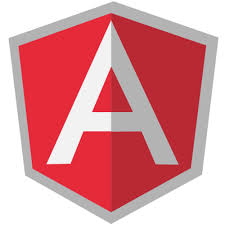You could understand this game already: you claim a word as well as google a JavaScript framework keeping that name. If there’s no relevant framework, you shed as well as consume alcohol a shot.
As a technique shows, you can easily win this video game since there are many JavaScript application frameworks. For frontend developers, it’s significantly tough to make up their minds concerning which JavaScript application framework to pick, especially when they need to construct a single-page application.
There are constantly much more choices for JavaScript frameworks. And also it’s constantly difficult to choose a JavaScript framework for front-end advancement.
So, what are front-end developers looking for in their technology stacks? As a full-time designer, I recognize it boils down to quick growth and also easy-to-make UIs.
https://www.youtube.com/watch?v=_P2fGeg9I5o
REACT

React stormed the JS world several years ago to become its certain leader. React urges you to make use of a responsive technique and a practical shows standard. React likewise presented most of its very own ideas to define its unique (at the time it was developed) technique to frontend internet development.
To use React, you’ll need to grasp a component-based architecture, JSX, as well as unidirectional data circulation. The unidirectional data circulation is implemented by Flux.
React-based applications are split right into numerous components. A single element data contains both organisation reasoning as well as HTML markup (which is actually a JSX markup that’s transformed right into JavaScript functions).
For interaction in between components, you can utilize either Change or a comparable JS collection. React additionally introduced unique objects– state and props. Making use of the state and also props items, you can simply pass data from an element to the layout (making use of the state things) or from a moms and dad part to a kid part (making use of the props object).
React triggered the development of a wide variety of additional tools to reach high versatility. For instance, instead of Change, you can go with MobX, Redux, Fluxy, Fluxible, or RefluxJS. And this list of state monitoring collections for React is far from extensive. The same goes for HTTP collections: React is able to deal with jQuery AJAX, fetch API, Superagent, as well as Axios, among others.
Although flexibility is its primary benefit, Respond, however, has concerns because of its flexibility. When you need to pick from several additional collections, you encounter the predicament of what exactly you must make use of with React. You might throw away much time trying to find out the very best options. Generally, there are still no strong development operations with React.
Respond attempts to set market criteria. For instance, Redux is considered the most effective as well as just collection for enterprise-level React apps. At the same time, you require to think of the following: Redux can seriously decrease development efficiency. React makes your work hard when you carry out a new feature and also have to alter too many points throughout the whole application. So we’re back to the same issue: should I pick a less complex library?
You’ll need to develop your very own operations with React. It’s a more difficult road than simply using what other JS structures provide you: plenty of all set devices that are built right into the structure.
VUE

Prima facie, you might claim that the Vue collection is simply a mix of Angular as well as React. As a matter of fact, Evan You, maker of Vue, obtained ideas from Angular as well as React. For instance, Vue wants you to keep component logic and designs together with stylesheets in one file. That’s how React works without stylesheets. To allow Vue parts to speak to each other, Vue makes use of the props as well as state things. This method also existed in React prior to Vue adopted it.
In a similar way to Angular, Vue desires you to blend HTML formats with JavaScript. You have to make use of Vue instructions such as v-bind or v-if to interpolate worths from the part reasoning to layouts.
For any kind of designer unfamiliar with Vue, React, as well as Angular, it’ll be even more challenging to choose a structure after what we’ve simply informed you, so let’s make clear several points.
One of the reasons that Vue deserves thinking about rather than React is due to the Redux library that’s commonly made use of in massive React applications. As discussed in the React area, when a React+Redux app grows bigger, you’ll invest a lot of time using small changes to multiple data as opposed to really servicing features. The Vuex collection– a Flux-like state management tool developed for Vue– appears much less unwieldy than Redux.
When it comes to the selection between Vue and Angular, the reasons to opt for Vue over Angular can be reduced to the following: Angular is an over-complicated, full-fledged structure with a restrictive nature; Vue is much easier as well as much less restrictive than Angular.
What’s also praiseworthy concerning Vue in contrast to Angular and React is that you don’t need to find out JavaScript one more time. Vue does not require you to learn an additional superset of JavaScript like TypeScript (for Angular) or JSX (for React). Because of this, the finding out contour is much less steep with Vue than it is with Angular and React.
One of the downsides of Vue is that it’s still much less preferred than either React or Angular. Because of this, Vue has much less all set solutions, so you may need to think about producing your very own solutions to solve various concerns.
Angular 2 to Angular 9

Angular 9 will certainly note a turning point exposed by the Angular group at the current AngularConnect 2019. According to the update, the group is intending to make the Angular Ivy compiler offered for all applications. The primary benefit of Angular Ivy is that it has the ability to decrease the dimension of applications.
Angular today has actually come to be very advanced and modular to use for front-end growth. Formerly you could put a link to the AngularJS library generally HTML documents, now you can do the very same by setting up different modules.
Angular’s flexibility is commendable. That’s why Angular’s 1.x variations are still in demand. However, numerous programmers presently count on Angular 2+ because of its MVC style which has changed substantially to an element based design.
Angular has a number of additional challenges. You’re virtually obliged to utilize TypeScript to ensure type safety in Angular applications. TypeScript makes the Angular 2+ structure not so pleasant to work with.
